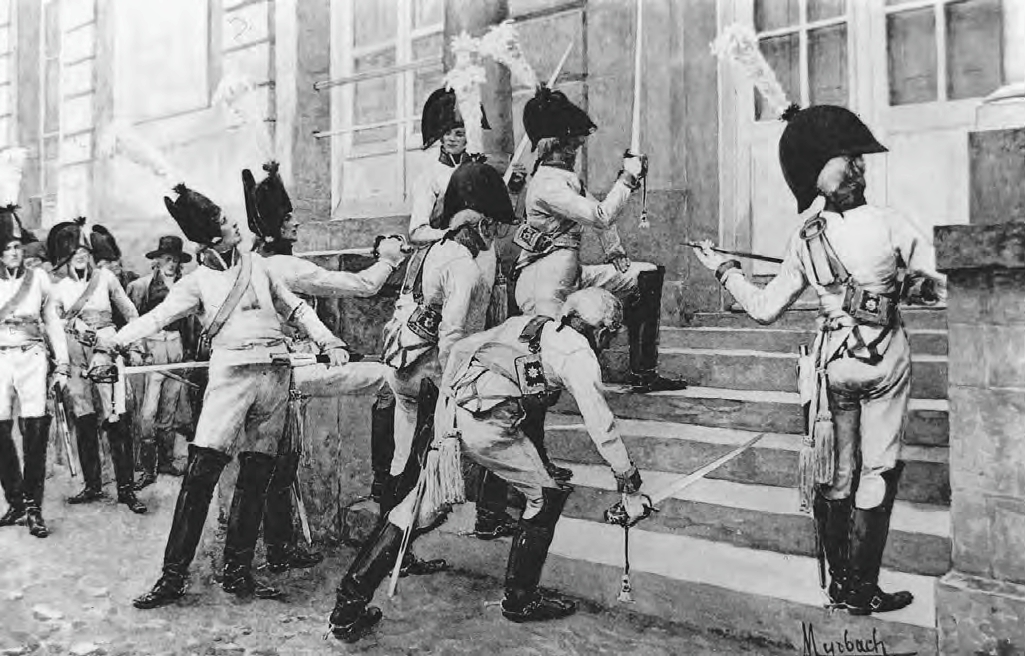Life Guards (Prussia) on:
[Wikipedia]
[Google]
[Amazon]
 The Gardes du Corps (''Regiment der Gardes du Corps'') was the personal
The Gardes du Corps (''Regiment der Gardes du Corps'') was the personal  Unlike the rest of the
Unlike the rest of the
 The Gardes du Corps (''Regiment der Gardes du Corps'') was the personal
The Gardes du Corps (''Regiment der Gardes du Corps'') was the personal bodyguard
A bodyguard (or close protection officer/operative) is a type of security guard, government law enforcement officer, or servicemember who protects a person or a group of people — usually witnesses, high-ranking public officials or officers, w ...
of the king of Prussia and, after 1871, of the German emperor (in German, the ''Kaiser''). The unit was founded in 1740 by Frederick the Great. Its first commander was Friedrich von Blumenthal, who died unexpectedly in 1745; his brother Hans von Blumenthal, who, with the other officers of the regiment had won the '' Pour le Mérite'' in its first action at the battle of Hohenfriedberg, assumed command in 1747. Hans von Blumenthal was badly wounded leading the regiment in a successful cavalry charge in the battle of Lobositz and had to retire from the military.
Initially, the Regiment was used in part as a training unit for officers as part of a programme of expansion of the cavalry. Early officers included the rake and memoirist Friedrich von der Trenck, who described the arduous life of sleep deprivation
Sleep deprivation, also known as sleep insufficiency or sleeplessness, is the condition of not having adequate duration and/or quality of sleep to support decent alertness, performance, and health. It can be either chronic or acute and may vary ...
and physical stress endured by officers, as well as the huge cost of belonging to the unit (the cuirasses, for example, were silverplated at a time when the precious metal was exceptionally expensive).
 Unlike the rest of the
Unlike the rest of the Imperial German Army
The Imperial German Army (1871–1919), officially referred to as the German Army (german: Deutsches Heer), was the unified ground and air force of the German Empire. It was established in 1871 with the political unification of Germany under the l ...
after German unification in 1871, the Garde du Corps was recruited nationally and was part of the 1st Guards Cavalry Division. The Regiment wore a white cuirassier uniform with certain special distinctions in full dress. These included a red tunic for officers in court dress and a white metal eagle poised as if about to rise from the bronze helmet on which it sat. Other unique features of the regiment's full dress worn until 1914 included a red sleeveless ''Supraweste'' (vest) with the star of the Order of the Black Eagle on front and back and the retention of black iron cuirasses edged with red which had been presented by the Russian Tsar
Tsar ( or ), also spelled ''czar'', ''tzar'', or ''csar'', is a title used by East and South Slavic monarchs. The term is derived from the Latin word ''caesar'', which was intended to mean "emperor" in the European medieval sense of the ter ...
in 1814. These last replaced the normal white metal breastplates on certain special occasions.
See also
* List of Imperial German cavalry regimentsReferences
* {{Commons category, Regiment der Gardes du Corps Military units and formations established in 1740 Royal guards Guards cavalry regiments of the Prussian Army 1740 establishments in Prussia nl:Garde du Corps